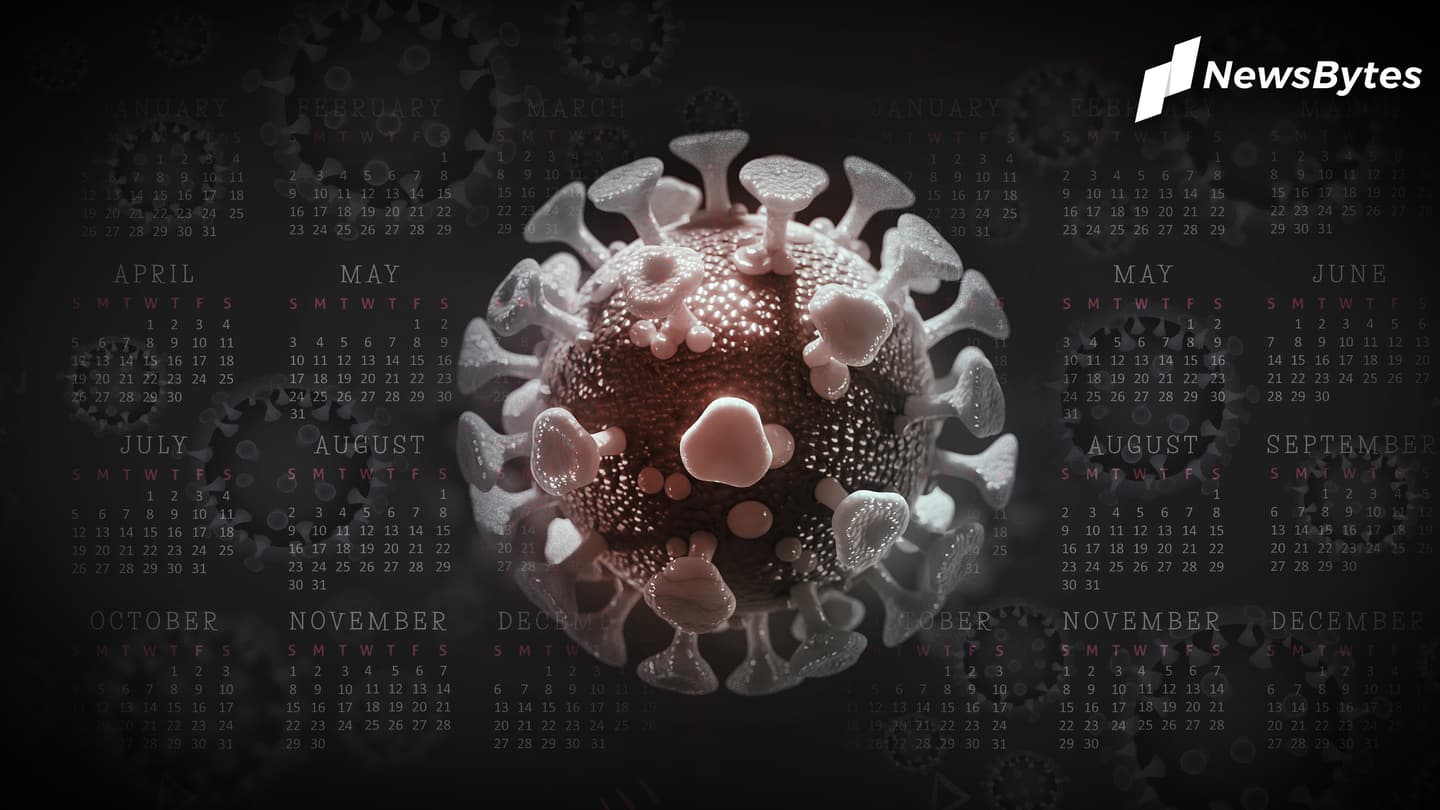
Six months of coronavirus pandemic, six months that changed India!
What's the story
On January 30, television screens flashed reports of the first coronavirus patient in India - a student from Kerala who had returned from China's Wuhan.
At the time, citizens were unaware that the new virus, would turn their lives upside down, extinguish sources of income, and lock them inside homes.
As India clocks six months of battling the virus, let's remember the excruciating time.
Virus
Within months of outbreak, SARS-CoV-2 ruined the world
Coronavirus usually sickens animals but to the world's misfortune, the SARS-CoV-2 jumped to humans, possibly at a wet market in Wuhan, and paralyzed the globe in 2020.
The virus attacks a host's respiratory system triggering symptoms like fever, cough, and breathing difficulties. In severe cases, it causes pneumonia, multiple organ failure, or death.
On March 11, WHO declared the outbreak a pandemic.
Looking back
In weeks after first case, disease didn't evoke seriousness
In India, days after the first case was reported, the virus didn't get much attention, which in hindsight, was catastrophic. In the first weeks of February, the protests against the contentious Citizenship Amendment Act (CAA) dominated the news and minds of lawmakers.
Later that month, President Donald Trump visited India, his first state visit since taking office, and the country rejoiced in welcoming him.
Lockdown
Learning from richer countries' experiences, India locked itself
With dozens of cases being reported almost every day, the crisis received its due attention in March; the grim situation in richer countries like Italy and Spain telling India that it was grossly under-prepared to deal with what was coming.
On March 25, India's 21-day lockdown, ordered by Prime Minister Narendra Modi, started.
The cases were still in hundreds at the time.
Migrant crisis
Already dealing with lockdown shock, India also witnessed migrant crisis
During the strict lockdown, everything from shops to businesses, flight to trains, hotels to restaurants, were closed, leaving a ruinous impact on the poor.
While India fought a battle against the unknown crisis, it was also faced with a challenge it wasn't prepared for — migrant exodus.
Left without jobs and food on plates, lakhs of migrant workers left for their homes, on foot.
Journey
More than 100 migrants died on their way home
Carrying all they had earned in cities, poor migrants walked for days on highways. At least 100 of them died in accidents, on railway tracks or highways.
It was in May that Centre "rose" to the occasion allowing Shramik Special trains to ferry those stranded home.
Shockingly, these journeys weren't without fatalities either, as at least 80 died on trains, possibly due to hunger.
Economy
Lockdown spelled doom for economy, Modi announced stimulus
The lockdown, naturally, had a substantial impact on the country's economy, which was already dealing with rising unemployment and poor GDP growth rate.
To bring the economy in green areas, PM Modi announced a Rs. 20 lakh crore package, 10% of total GDP.
The government also announced free ration for the poor, a scheme that was extended till November this year.
Package
PM's 'Aatmnirbhar Bharat' package is meant to help economy's revival
The package, termed "Aatmnirbhar Bharat package" by PM Modi, was meant to make India self-sufficient. In his speech, he cited how India didn't produce even one PPE kit when the pandemic started, and now is on the way to become an exporter.
He also stressed on being "vocal for local," asking Indians to purchase indigenous products and contribute in recovery.
Corona-warriors
The pandemic revealed how ill-prepared India's medical infrastructure is
Among other things that it did, the pandemic exposed India's poor medical infrastructure. Doctors, leading the battle, were forced to treat patients without proper safety and are struggling for edible food in hospitals, even now.
Meanwhile, patients were let down as many of them couldn't get themselves tested, nor could they find beds. Pleas of some, requesting a transfer to better facilities, were ignored.
Recoveries
Amid disturbing news, India's recovery rate gives some relief
What gives respite amid the gloomy news, and the fact that India is the third worst-hit nation, is the respectable recoveries. Till Wednesday, more than 1 million defeated the virus, making the country's recovery rate among the best globally.
However, states like Maharashtra, Tamil Nadu, Andhra Pradesh, Delhi, Bihar, and Uttar Pradesh, continue to remain a concern as coronavirus cases are rising exponentially there.
Vaccine
Cases are rising, India bets on vaccines
Like the rest of the world, India, which has lost over 35,000 to the virus, is pinning hopes on a vaccine. Two indigenous vaccines entered first phase of human trials this week, and the initial results are promising.
Meanwhile, India's vaccine giant, Serum Institute of India, has tied up with Oxford to mass-produce its vaccine. SII could start phase 3 of human trials soon.
Personal
Brace yourselves, for the road ahead is long and difficult
The last six months have been tumultuous, with people losing their loved ones, homes and jobs. However, with requisite precautions, the country seems to have learned to live with the virus. Needless to say, the road ahead is long and torturous.